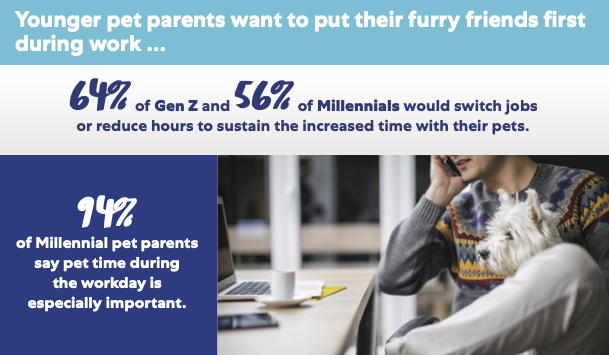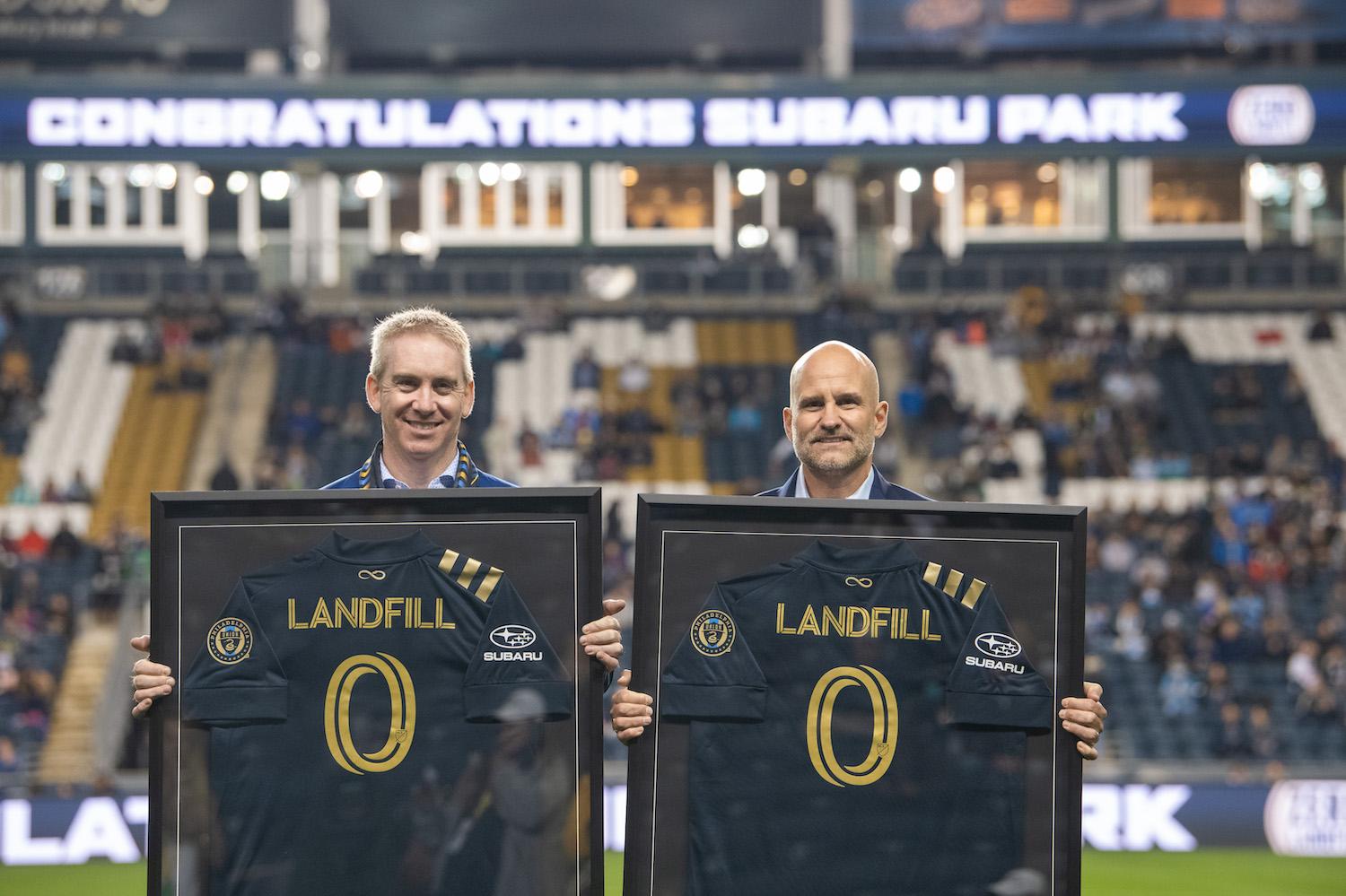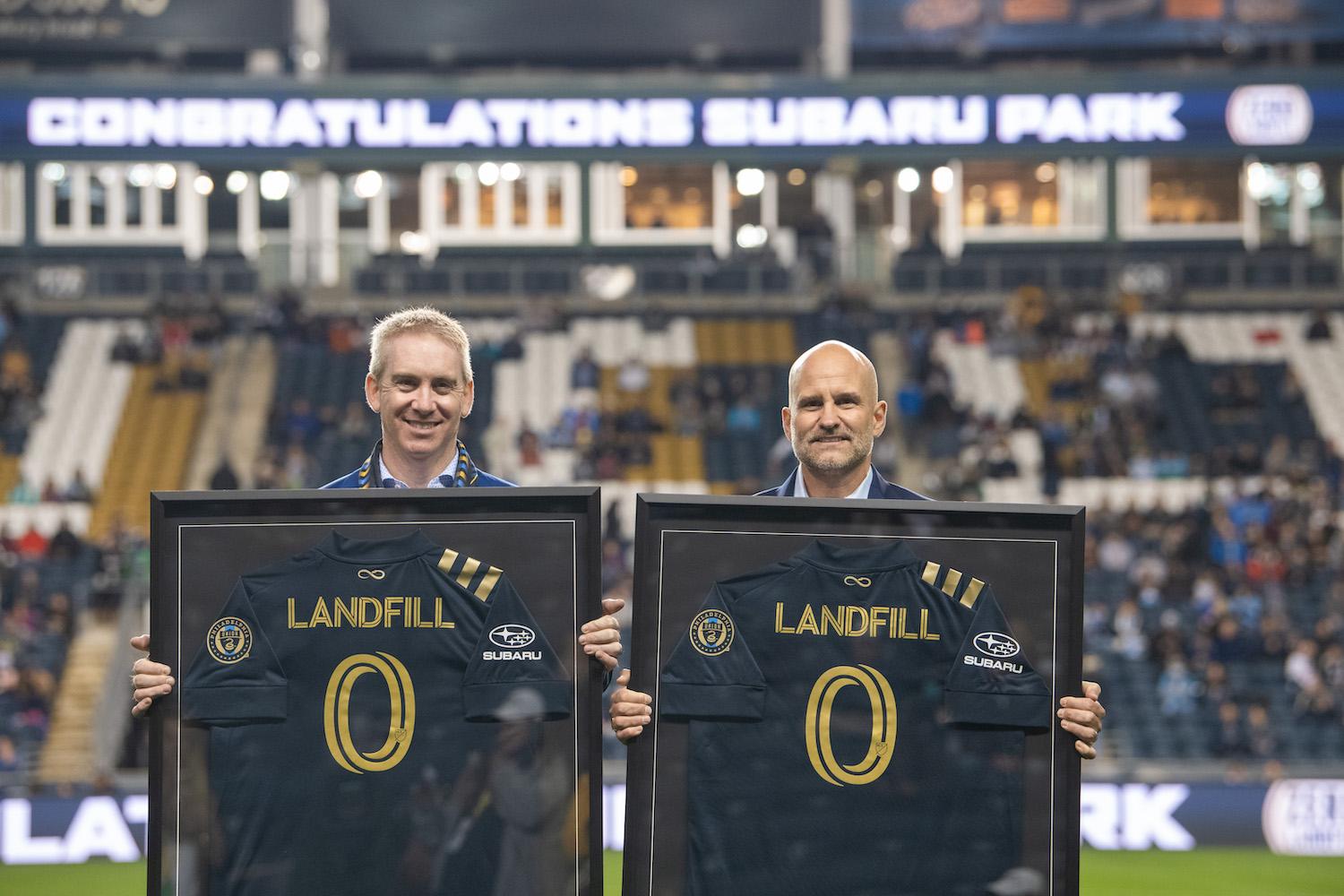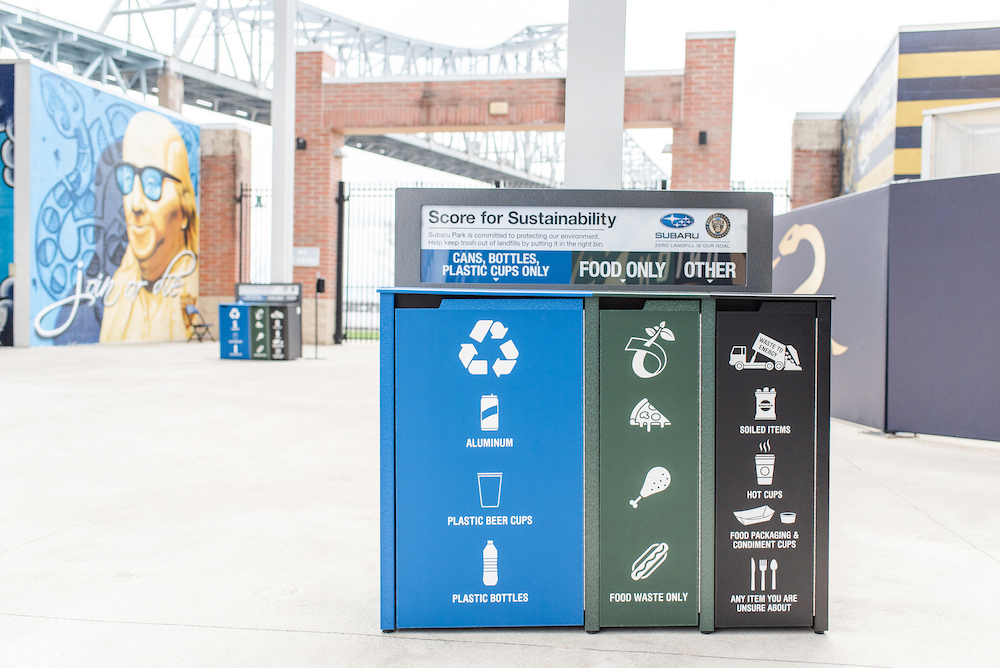Businesses Step Up Support Against Attacks on Education, Teachers and Students


Business has long had a stake in K-12 and post-secondary education. From the school models of the industrial revolution to small businesses supporting local schools with banners on fences, companies have wanted to ensure there’s an educated workforce. Where once these organizations focused on skill sets and knowledge to benefit their particular field, more now embrace how education affects their operations and profitability on a larger societal level.
The stakes are higher now.
The floodgates of educational gag orders proposed by state legislatures and gubernatorial executive orders opened wide over the last year. Allegedly designed to prevent in-school lessons or discussions of “divisive” concepts, the initiatives gained traction as opposition to critical race theory (CRT) in schools, a much-misapplied label.
A movement to create a 'snitch culture' in education
More accurately, these legislative and executive efforts — some of which are now in effect — limit how to handle race and gender issues in schools, most notably in social studies and literature classes. However, due to the broad and vague wording of the bills and orders, teachers and school administrators feel confused and afraid as to what is permitted and what criminal penalties and fines may be imposed.
Virginia Gov. Glenn Youngkin’s imposed a tip line for parents to report teachers and schools they deem to be teaching “divisive subjects” and “behaving objectionably.” Youngkin launched the tip line by executive order on his first day in office, citing CRT as an example of a reportable offense. The Virginia governor then attempted to attach similar language to the state budget bill, but he failed. Other anti-CRT bills currently struggle in the Virginia General Assembly, but not necessarily for long.
PEN America is logging such initiatives — a whopping 128 rows of laws throughout 36 states. It shows the targets are not just K-12 public schools, but also private schools, colleges, state contractors and employers. The proposed laws include legislation that targets LGBTQ students, teachers and professors, and corporate trainers. For example, Florida’s controversial “Don’t Say Gay Bill,” which effectively bans classroom conversations about gender identity and sexual orientation, passed on Tuesday, and Gov. Ron DeSantis is likely to sign it.
Highlighting the people's history
In a variety of ways, companies are taking a stand against measures like these. On Feb. 15, the beauty brand Lush launched a campaign called Teach Truth to provide educators with resources to include the narratives of those often left out of standard social studies offerings: Black, Indigenous, People of Color (BIPOC), women, LGBTQ people and workers, among others.
The company also partnered with the education nonprofit I Dream Library, which provides books and other resources that support teachers, caregivers and students, and with educator Jesse Hagopian of the Zinn Education Project.
Lush’s website features an explanation of the reasoning behind the campaign. Further, Lush crafted a bath bomb (shaped like an open book) to be sold for a limited time with 100 percent of the purchase price (excluding tax) being donated to support educators.
More companies are pushing back against the attacks on education
In another business action, over 150 major corporations took a stand against government assaults on diversity and inclusion — especially toward LGBTQ youth and adults — in not only public K-12 schools, but also post-secondary institutions and even the training programs of companies themselves. Marriott, Hilton and American Airlines were among the flood of top-flight companies opposing anti-LGBTQ state legislation.
In their nationwide business statement, the corporations made their case to legislators that such laws conflict with not only their values statements, but also with their bottom lines. Moreover, in the statement, these entities let it be known where their clout lies in asserting their opposition to these discriminatory laws: “As we make complex decisions about where to invest and grow, these issues can influence our decisions.”
Legislative and executive attacks on the LGBTQ community, educators, schools, corporate trainers and DEI efforts are now, literally, all over the map.
As proposals become reality, companies will need to act on those strong words if they want to protect the gains they’ve realized from their inclusion programs.
And that right soon.
Image credit: Redd via Unsplash
Sustainable Snacking is on the Rise, According to a New Report


Not too long ago, a snack meant milk and cookies after school, but snacking has exploded in popularity and variety, to the point where it’s now considered a meal category of its own. With all that growth has come an increase in socially-conscious noshing, with snackers favoring foods produced and packaged responsibly and sustainably, according to the Third Annual State of Snacking Report released by Mondelēz International, one of the largest snack companies in the world.
“Consumers are growing more intentional about their purchase decisions as they become more in touch with their values,” Dirk Van de Put, CEO and chairman of Mondelēz International, wrote in the report. “They are making more of an effort to learn more about the brands or companies they buy from and becoming more discerning over the sustainable nature of the snacks they choose.”
Pandemic-induced lockdowns gave many consumers a chance to reflect on their food choices, and 80 percent of respondents to the State of Snacking report said they have become more aware of what they are buying, why they’re buying it and how it aligns with their values. How snacks are packaged has also grown in importance: 78 percent of respondents said they seek out low-waste packaging and 87 percent favor packaging that is easy to recycle.
“The findings in this report affirmed what we at Mondelēz International know to be true: Conscious consumption is increasingly top of mind for consumers, and they are becoming more intentional about their purchase decisions and aligning purchases with values,” Nick Graham, senior vice president for global insights and analytics at Mondelēz International, told TriplePundit. “Consumers are becoming more discerning over how the ingredients in their snacks are grown and the conditions under which they are produced and making choices to purchase snacks from companies with similar values.”

Consumers continue to seek out sustainable products, even amidst pandemic stress
The Mondelēz International report assesses consumer sentiment in the second year of the global pandemic — and it found that even as COVID-19 upended all aspects of daily life, consumers continued to scrutinize companies’ social responsibility commitments and production practices. Eighty-five percent of respondents said they either currently buy or are seeking to buy their snacks from companies that are committed to reducing their environmental impact, and 87 percent favor companies committed to fair labor practices.
Echoing those results, two-thirds of respondents to Trivium Packaging’s 2021 Buying Green Report labeled themselves as environmentally aware and said it was important to buy products in recyclable containers. Trivium’s report includes survey results from more than 15,000 consumers in Europe, North America and South America, and almost two-thirds (64 percent) said they put a priority on items that are packaged in recycled materials. Younger generations are more willing to spend extra money on packaging that is environmentally-friendly.
A Google Trends analysis included in the Mondelēz International report also cites environmental concerns and animal welfare as affecting shoppers' food buying choices.
How brands are responding to rising interest in sustainability
Organizations and businesses are hearing consumer preferences and addressing the urgent need to rework packaging and reduce plastic waste globally. Those efforts include the Ellen MacArthur Foundation’s Plastics Pact Network, a global group committed to developing a circular economy for plastics and "reducing the need for fossil-based plastics and other petrochemicals."
Reducing plastic waste, redesigning containers to use less plastic, and making recycling easier and more available are also among the missions of the Consumer Goods Forum, which fosters collaboration among manufacturers and retailers on a host of environmental and sustainability issues.
These efforts have drawn support from major brands and retailers like Mondelēz International, Coca-Cola, L’Oréal, Target and Walmart, which have pledged to work together to bring more sustainable packaging onto store shelves.

The future of sustainable snacking
The importance of packaging, production, and recyclability of snack products and containers will to continue to increase as snacking’s role in daily life grows. About 79 percent of those surveyed for the Mondelēz International report said their definition of a snack has evolved over the last three years to include “more or different types of foods, occasions for eating, or other elements.”
“Our State of Snacking report found that the definition of snacking is evolving among consumers globally, which is reshaping the meaning of snacking within people’s lives,” CEO Dirk Van de Put added in a press statement.
Part of the evolution of snacking is peoples’ growing preference for eating several small meals during the day rather than three big meals at breakfast, lunch and dinner, the report noted. Snacking is also increasingly seen as an acceptable indulgence, a way to treat oneself without going overboard on cash or calories.
“We make it a priority to constantly learn about the evolving role snacking plays in our consumers’ daily lives and rituals,” Graham told us. “The results of this report help us deliver on our purpose — to empower people to snack right and our mission at [Mondelēz International] to continue to lead the future of snacking by offering the right snack, for the right moment, made the right way.”
This article series is sponsored by Mondelēz International and produced by the TriplePundit editorial team.
Image credits: No Revisions/Unsplash and Mondelēz International
Lush Takes a Stand on How U.S. History is Taught in Classrooms


The book-shaped 'Knowledge' bath bomb from Lush.
Building on its long record of corporate activism, the beauty brand Lush has taken on another social impact cause within its series of ethical campaigns – this time focused on school curricula.
Standing up for teaching everyone’s history in public schools
Last month, Lush launched a campaign in cooperation with The Zinn Education Project and the I Dream Library, called Teach Truth. Carleen Pickard, Lush’s ethical campaigns specialist, told TriplePundit that the Teach Truth Campaign evolved from a moment of racial crisis stemming from the death of George Floyd in May 2020.
“In an effort to uncover unconscious biases, Lush leadership sought ways to confront racism from an educational standpoint, such as teaching the full, unabridged versions of Black history, from the perspective of the poor, BIPOC and traditionally disenfranchised.” Pickard said.
In the course of building this campaign, several events from history related to racial tension were framed from the true perspective of their impact: the effects of the prejudicial treatment of Muslims after 9/11; the internment of Japanese Americans after the bombing of Pearl Harbor; early interactions with pilgrim explorers in America that proved detrimental to Native Americans; the isolation of people during the HIV/AIDS epidemic; and past and modern homophobia and transgender bias. All of these historical moments are deserving of frank discussion, the goal being to understand history well enough not to repeat history.
Delivering on that commitment
The Teach Truth campaign included a specific product launch called the Knowledge Bath Bomb (pictured above), a lightly scented fizzer of vanilla and lyang lyang. All product proceeds go toward local programs that connect educators and students to resources that teach a more truthful history, such as the I Dream Library. Preliminary figures indicate the Knowledge Bath Bomb and Teach Truth Campaign generated $250,000 in funding over the two-week period after it launched in February.
At last count, Lush employs 3,209 persons in North America, with 1,622 employees located in the U.S. dispersed primarily in its 220 U.S. stores.
“Our company’s values and the Ethical Campaigns we support are part of an employee’s onboarding process,” Pickard told us. It isn’t necessary that employees agree with everything, she added, but it is part of the learning process and employee participation in the company’s ethical campaigns program is encouraged.
“We groom our employees to be volunteers, not expecting everyone to come to it with the same amount of enthusiasm. But over time, it’s rewarding to see the enthusiasm develop, especially in some you wouldn’t think of participating,” Pickard said.
What Lush uses in its approach to corporate social responsibility and environmental, social and governance issues is the constant commitment model of participation. Overarching individual ethical campaigns is the notion that the company itself is about progressive and globally conscientious thinking, backed by action, when it comes to “doing better” for surrounding communities and, indeed, the world.
For Lush, a continued focus on both people and the planet
Other challenges the company has taken on include animal rights as well as those focused on human rights and environmental protection. As part of these efforts, business groups within the company are expected to campaign at least once a year on one of the core values through their shops and website.
Lush’s ethical campaigns program has also included topics such as the climate crisis, immigration, animal cruelty, transgender rights, support for the Black Lives Matter movement, refugees’ rights and protecting marine life. Since 2012, the company’s ethical campaigns program has raised more than $3.5 million.
Many of these programs are funded through special product promotions. Charity Pot, another Lush program dedicated to charitable giving, features a line of hand and body lotions that has generated more than $54 million since the company first launched the products in 2008.
Meanwhile, Lush has continued its commitment to environmental stewardship. For example, the company has invested more than $1.5 million in more biodiverse farming systems in Uganda, Guatemala, Peru and Arizona.
Finally, Lush continues to implement some of the strictest non-animal testing policies in the cosmetics industry and only buys materials from suppliers that do not test with animals. The company says it has been able to identify 20,000 natural ingredients that do not require animal testing and promotes the use of three-dimensional human skin models to take the place of sensitivity testing on rabbits.
Image credit via Lush
Pet Homelessness Shouldn’t Be Happening: Here’s How Companies and Individuals Can Help


Despite Americans’ overall affection for pets, the reality is that at any given time nearly 48 million cats and dogs don’t have a home in the U.S. For years, workers and volunteers at animal shelters have faced an uphill battle as they selflessly combat pet homelessness.
At the forefront of this massive challenge is Dr. Ellen Jefferson, an animal welfare advocate, longtime pet shelter veterinarian, and president and CEO of the Texas animal shelter Austin Pets Alive.
TriplePundit spoke with Dr. Jefferson from her office in Austin to learn more about this ongoing problem and how individuals and companies can help to tackle pet homelessness. She also put to rest some common assumptions that many of us still hold about why countless dogs and cats cannot find safe and loving homes, and she speaks to new research from Mars Petcare, the world’s leading pet care company by revenue, about the state of pet homelessness globally and the role of private-sector partners in creating a world where all pets are wanted, cared for and welcome.
Homelessness is driven locally by gaps in funding and technology
The current model under which most animal shelters operate is based on an outdated approach that municipalities have long taken toward unwanted pets. For years, the emphasis has been on preventing the spread of diseases such as rabies. To that end, shelters were designed and run to contain animals until it came time for a common, and sad, outcome — pet euthanasia — as the vast majority of shelters are not staffed and resourced effectively to help these dogs and cats land in a new home.
“Only 0.2 percent of local government funding is going to animal shelters, and that’s a problem when community members believe that pets are part of their family,” Dr. Jefferson explained.
Yet the role shelters have within their local communities have needed to evolve with the times. “The problem with government shelters is that they are often thought as the bottom rung and the lowest priority of the safety nets within communities, so they are responsible for taking on problems that don’t get helped elsewhere,” Dr. Jefferson continued.
Further, shelters are now facing a far different reality. They are not merely tasked with warehousing stray animals. Due to the decades-long effort to spay and neuter pets across the U.S., the population of animals going into shelters is actually very low, Dr. Jefferson said.
“For every pet at an animal shelter, there’s an estimated eight people willing and ready to take them home,” she explained. “But the problem is that the industry hasn’t been able to modernize in order to meet demand. There’s no longer an ‘infestation,’ but there are hundreds of barriers we face in finding these pets a new home.”
Lack of information about the driving forces behind pet homelessness leaves many of those barriers unaddressed. “That myth of overpopulation is really pervasive. We need to debunk that mentality with data and tell policymakers that it’s no longer acceptable to act like this, and to provide the budget necessary so that shelters have the resources they need,” Dr. Jefferson continued. “We need to bring people together who are determined to solve these big social problems.”

How companies can lend resources to help pets and families find each other
The quest to secure more government funding may be long for animal shelters throughout the U.S., but Dr. Jefferson insisted that business can step in where policymakers are falling short. “Companies can help with innovation, entrepreneurism and commercializing the industry,” she told us.
In particular, firms in the technology sector can help animal shelters modernize through software and better serve their communities. Of course, not all shelters would be able to be part of such a huge change — after all, plenty of shelters are small operations staffed by one person who may not have a computer in the first place. Still, modernizing such systems would offer many shelters a fresh start and a new role in helping to strengthen communities, whether they reunite lost animals with their families or find new homes for homeless pets.
“We need to bring in human health software to help track individual pets,” Dr. Jefferson suggested. “It’s a similar concept to tracking a person through a hospital system, but we’re using shelter software that is built for jails, not built for hospitals.”
Yes, you read Dr. Jefferson right: Most shelters’ software is based on an incarceration model, not one focused on health or well-being. “The most common software package is the subset of a prison software – the bar is set by that one. It’s a space that hasn’t had innovation or competition, so when it comes to animals in shelters, we’re about 25 years behind,” she said.
One common result — and a tragic one at that — is pets that are picked up loose on the street (even those with homes) can be easily lost in the shelter system. “Fifty percent or more of the animals that are entering shelters don’t need to be there at all. The vast majority are within a block of home when they are picked up,” Dr. Jefferson told 3p. “But once an animal enters a shelter, and one often that is on the other side of town, their chances of being reclaimed drops to 10 percent.”

A step forward for tackling pet homelessness
Negative perceptions in some communities around adopting and fostering homeless pets are among the barriers to ensuring every pet has a loving home, which organizations like Mars Petcare are focused on addressing. The company provides resources for local governments and pet parents through its Better Cities For Pets program. It also donates pet food to shelters through its pet nutrition brands like Pedigree, Nutro, Iams, Sheba and Cesar, and holds regular adoption events — including its annual Adoption Weekend with Pedigree Foundation.
The company also recently released its first State of Pet Homelessness Index, research that measures and tracks the underlying causes leading to the abandoning of pets, thereby seeking to identify key problems that must be solved in order to address such challenges. Mars Petcare developed this work in partnership with animal welfare experts and organizations, resulting in an index comprised of quantitative research and data from more than 200 global and local sources to understand the issues and find the best answers possible.
As a starting point, the index focuses on nine countries across the globe, and the findings are staggering: In those nations alone, 224 million cats and dogs don’t have homes, and less than 10 percent of them are housed in shelters. The U.S. has an overall middling rating on the index — higher than countries such as Greece and Mexico, but lower than Germany and the U.K.
Leadership at Mars is hopeful that the data will inform and accelerate collective progress toward ending pet homelessness. “We’ve learned through our work over the last decade that this problem demands both global attention and local intervention,” said Ikdeep Singh, regional president of Mars Petcare. “Companies can start by understanding the issue in the communities where they operate and collaborating on solutions with local animal welfare organizations like Austin Pets Alive. We look forward to more people coming together to tackle pet homelessness.”
Dr. Jefferson is on the advisory board for Mars Petcare’s State of Pet Homelessness Index and said the study is crucial for anyone working within this space to understand the ongoing disconnect between the demand for pets and the millions of pets that need homes.
“The Index is a framework to understand what is happening, which has never been done before across the globe,” Dr. Jefferson said. “I’m excited to work with Mars and see this emphasis on a worldwide approach to end pet homelessness.”
This article series is sponsored by Mars and produced by the TriplePundit editorial team.
Image credits: Matt Nelson and Jonas Vincent via Unsplash
This Oil Giant is Banking on Biofuel to Pacify Climate Critics


The Russian invasion of Ukraine has already sent fossil energy prices soaring. Against this backdrop, Chevron’s $3.15 billion acquisition of a leading biofuel company may appear as a hedge against price spikes as well as a decarbonization step. However, the deal has come a day late and many dollars short. Activist shareholders have just filed papers to request the removal of two members from the company’s board of directors, including the chairman, for failing to take meaningful action on climate change.
A $3 billion biofuel move
Compared to other legacy oil and gas firms like Shell and BP, Chevron has fallen far behind on decarbonization. According to an analysis by the Climate Accountability Institute, the company was one of the top three corporate greenhouse gas emitters in the world in 2019, second only to Saudi Aramco.
Chevron has a lot of catching up to do, but its new focus on biofuel may cause more problems than it solves.
Biofuel does have a place in the global energy transition, but its advocates need to account for the potential of land use conflicts to undermine the global food supply. That issue has intensified in recent years alongside an increase in floods, droughts, and other impacts related to climate change.
To the extent that Ukraine produces biofuel crops, Russia’s murderous rampage through that nation also underscores how human conflict can take arable land out of cultivation. In addition, biofuel farming can give rise to changes in land use patterns that risk exacerbating greenhouse gas emission while resulting in biodiversity and habitat loss.
Nevertheless, on late February Chevron announced its intention acquire $3.15 billion in the outstanding shares of Renewable Energy Group, which operates 11 biorefineries in the U.S. and Europe.
“The transaction is expected to accelerate progress toward Chevron’s goal to grow renewable fuels production capacity to 100,000 barrels per day by 2030 and brings additional feedstock supplies and pre-treatment facilities,” Chevron explained.
In a press release dated March 1, Chevron also described a new decarbonization plan that leans heavily on “renewable fuels, hydrogen, carbon capture and offsets.”
If that means green hydrogen -- not hydrogen sourced from natural gas or coal -- Chevron’s plan could indirectly help accelerate wind and solar development. Aside from that, the company’s focus on biofuel, carbon capture and carbon offsets appears ineffectual and far out of date. Leading energy consumers are already moving away from carbon offsets, and the low cost of wind and solar is undercutting the value of large scale carbon capture projects.
Activist shareholders make their move
Chevron expects the agreement with REG to be finalized later this year. In the meantime, though, it’s little wonder that activist shareholders on the board are not satisfied.
On March 8, the activist shareholder group Majority Action released its 2022 Proxy Voting Guide, designed to help institutional investors assess the climate action plans of leading companies in the areas of electricity generation, oil and gas, auto, banking, insurance and deforestation.
The guide flags 27 companies for shareholder action, with a particular focus on Chevron.
“Investors must move beyond disclosure and company-specific climate risk management frameworks, and focus on holding accountable the board directors of a relatively small number of large companies whose actions are a significant driver of climate change,” said Eli Kasargod-Staub, Executive Director of Majority Action.
The board-centered approach has proven to be effective. Majority Action cites its role in having Lee Raymond, “the chief architect of ExxonMobil’s climate denial strategy,” removed as leader of the JPMorgan Chase board of directors. The organization also notes that investors voted in a slate of dissident directors on the ExxonMobil board, “amid concerns about the company’s climate laggard status.”
Activist shareholders shine spotlight on Chevron
As for Chevron, the company’s out-of-date climate plan is just one indication that a more holistic overhaul of corporate culture is needed. In recent years Chevron has become notorious for paying lip service to modern standards of corporate social responsibility while acting more like a company out of the “robber baron” mold of the 19th and early 20th centuries, including its long battle to avoid financial responsibility for environmental damage in Ecuador.
In addition to releasing the Proxy Voting Guide, on March 8 Majority Action also filed an exempt solicitation against two key members of Chevron leadership, Lead Director Ronald Sugar and Chair and CEO Michael Wirth. Majority Action cited their “failure to adequately respond to successive majority vote shareholder resolutions on greenhouse gas reductions and climate lobbying.”
“The company’s targets, investment plans, and policy influence continue to be demonstrably out of alignment with shareholder demands,” Majority action added.
Majority Action also emphasized that 61 percent of Chevron shareholders voted for substantial action on climate change last year, including action on Scope 3 emissions related to Chevron products, under a proposal put forth by the shareholder group Follow This.
In contrast, Follow This founder Mark van Baal has described the new Chevron plan as “disappointing tokenism” leading to a greenhouse gas cut of just 5 percent by 2028.
The larger problem: Russia
The Chevron brand has already been sullied, and so far, its response to Russia’s unprovoked attack on Ukraine has been less than stellar.
Scores of the best known brands in the world have responded to the catastrophe by dropping their operations in Russia or halting sales of their products in Russia, or by lending technical assistance to Ukraine. That includes BP, Shell and other leading global energy companies.
Chevron, though, appears to be stuck. The company has made it clear that it does not produce or explore for oil and gas in Russia, but the company does license a number of Scope 3 products for use by other oil and gas stakeholders in Russia. It may be difficult for the company to disentangle itself from those contracts. As of this writing, the company has not announced any plans to halt sales of its products, licensed or not, in Russia.
In addition, Chevron notes that it is a 15 percent shareholder in the Caspian Pipeline Consortium (CPC). Chevron relies on the CPC pipeline to export crude oil from its production operations in Kazakhstan.
In addition to transporting crude oil from Kazakhstan, the pipeline is also a significant asset for Russian oil producers. Chevron notes that the pipeline transported a daily average of 200,000 barrels from Russia and 1.1 million barrels from Kazakhstan in 2020.
No word yet on whether or not Chevron can separate itself from the CPC pipeline any time soon.
As the fight for the future ranges from the besieged cities of Ukraine to the boardrooms of global companies, companies like Chevron are falling further out of step with the demands of a world in transition. Something has to give, and shareholder activists are more determined than ever to make change happen.
Image credit: Todd Trapani via Pexels
Airbnb Users Set the Bar High on How to Support War-Stricken Ukraine


A mid-century designed forest chalet in Verholy, Ukraine.
Years ago, when the founders of Airbnb conceived the idea that an air mattress in their living room could be a bed and breakfast, they could not have foreseen that their business would become a vehicle to funnel cash to a war-torn Ukraine.
But last week, thousands of the online booking site's users reserved vacation rentals they will never use to support Ukrainian hosts struggling to survive Russia’s invasion. During a two-day period last week, almost $2 million was spent on reservations for more than 61,000 nights in Ukraine, including 34,000 nights booked by guests in the United States, according to the Airbnb website and the company’s CEO.
Although several organizations have established charities and donations to assist Ukrainians since Russia attacked two weeks ago, some people are rightfully concerned about where their donations are going and how much actually reaches Ukrainians in need.
Social media is helping to promote the trend as a safe and efficient means to get money directly into the hands of Ukrainians, Business Insider reports. The trend is gaining momentum on platforms like Facebook, Instagram and Twitter, catching the attention of large social media presences like Instagram meme page Quentin Quarantino as well as Airbnb’s CEO, Brian Chesky.
Airbnb did not start the effort, but supports it, and Chesky has posted messages on Twitter about the conflict as well as from users who have stepped forward to help Ukrainian hosts. According to Airbnb, by March 4 more than 357,000 people had visited the site to donate or become a host for refugees.
Several people interviewed by Business Insider who have booked anywhere between one night to two weeks in cities around Ukraine agreed that such bookings are the quickest and most secure way to get money directly in the hands of Ukrainians.
In Irpin, a city of 62,000 west of the Ukrainian capital Kyiv, one person booked an apartment with little intention of staying, and the host responded, “Hope we will win and stop this horror.”
Given the tsunami of misinformation being generated by the Russian government through state and social media, some on Twitter have warned that scammers may try to set up fake listings in Ukraine to “cash in on noble intentions,” and warned users to check the host's reviews before trying to help.
Airbnb, which has suspended operations in Russia and Belarus, has waived guest and host fees on bookings so the rental fees go directly to the Ukrainian hosts. "We are so humbled by the inspiring generosity of our community during this moment of crisis. Airbnb is temporarily waiving guest and host fees on bookings in Ukraine at this time,” the company said in a statement to Fortune.
With Russia’s invasion prompting more than 2 million people to flee Ukraine, Airbnb has also volunteered up to 100,000 homes to house Ukrainian refugees, which could reach as many as 4 million people, according to the United Nations. Some 28,000 of the company's hosts around the world, including 2,800 in France, are currently offering accommodation for refugees.
On Tuesday, Airbnb's charitable arm, Airbnb.org, along with the International Organization for Migration (IOM), announced a partnership to connect people fleeing from Ukraine with free, short-term housing in Hungary, Moldova, Poland, Romania and Slovakia. These stays are free and funded by Airbnb, donors to the Airbnb.org Refugee Fund, and hosts donating through Airbnb.org. Airbnb is waving all fees for these stays.
“We appreciate the generosity of our community during this moment of crisis," a company spokesperson told Business Insider, noting that Airbnb.org has seen an "overwhelming response.”
Image credit: Tina Hartung via Unsplash
As Russia Rattles Nuclear Sword, Corporate Leadership Wakes Up


A recent pro-Ukraine rally in front of the White House in Washington, D.C.
Russian President Vladimir Putin accomplished the unthinkable when he leveraged his nation’s nuclear weapons capability to launch an unprovoked attack on Ukraine. Most likely he and other leaders in Russia assumed that Ukraine and its allies would capitulate when faced with catastrophe on a global scale. However, he did not count on the power of global business leaders to throw the Russian economy into chaos, setting the stage for the possible collapse of his government.
NATO can’t act against Russia …
Putin pulled the trigger against Ukraine under the correct assumption that the governments of the North American Treaty Organization (NATO) cannot deploy their forces in Ukraine without touching off a third world war.
NATO nations can still supply weapons and other aid, but Putin apparently calculated that his “friend,” former President Trump, had successfully weakened the alliance, rending it less capable of organizing effective aid. Trump spent his term in office insulting NATO and threatening to pull the U.S. out altogether, while reportedly attempting to extort Ukrainian President Volodymyr Zelenskyy by withholding a weapons deal that had already been approved by Congress.
Current President Joe Biden is widely credited with unifying NATO and other nations in a coordinated response. Still, NATO must act with extreme caution to avoid widening the conflict, and Putin has added fuel to the fire by threatening nuclear war.
…but corporate leaders can
Against this backdrop, the actions of corporate leadership are of critical importance. Putin can leverage the international laws of warfare and threaten the nations of Europe with nuclear catastrophe, but there is little he can do against a global commercial network distributed throughout Russia and among practically every nation on Earth.
Within days of Russia’s invasion, dozens of global brands publicly announced they are shutting down their operations in Russia, including at least four leading oil and gas stakeholders: BP, Shell, Equinor and ExxonMobil.
Editor's note: Be sure to subscribe to our Brands Taking Stands newsletter, which comes out every Wednesday.
The corporate response has also been taking place behind the scenes. Shortly after the attack began, Ukraine’s vice prime minister, Mykhailo Fedorov, tweeted an appeal for help directly to Silicon Valley tech companies. Though not all launched an effective response, those that did made a significant impact.
Apple has stopped selling its products in Russia. Google, Facebook and Twitter have been working to counteract Russian disinformation on their platforms, while also cutting Russia’s state media off from ad revenue. Google and Microsoft have also deleted Russia’s state controlled media from their app stores, and last week Facebook’s parent company, Meta, banned Russia’s RT and Sputnik media altogether.
In addition, Microsoft, Amazon and Google have been aiding in cybersecurity efforts while preventing Russia from making strategic use of their publicly accessible data.
Leaders in the all-important semiconductor chip industry have also halted shipments to Russia, including Intel, AMD, Samsung and the Taiwanese firm TMSC.
A bottom-line motivation for the do-gooders
Consumers have already been sensitized to corporate track records on human rights and social responsibility, and that is another development that Putin apparently miscalculated. Even if corporate leaders don’t really care about Russian atrocities in Ukraine, they do care about the bottom line.
Ukraine has taken its case to the court of public opinion, and there is simply no contest. While Putin continues to feed lies to the Russian public, the rest of the world is well aware that the supposed “special operation” to “liberate” Ukraine from “Nazi” oppressors is transparently false, and that Russia is deliberately terrorizing Ukraine’s civilian population.
Millions of people – that is, consumers – around the world are contributing to aid organizations and advocating for Ukraine, making it all but impossible for leading household brands to continue doing business in Russia indefinitely.
The Ukraine Corporate Index
Some consumer advocates have criticized corporate leaders for being slow to act, and that may be so. However, as Russian atrocities in Ukraine continue to mount, the corporate reaction has intensified.
Against this backdrop, it was only a matter of time before consumer groups organized an index around the corporate response to Russian atrocities in Ukraine, making it easy for individuals to identify the position of their favorite brands.
Last week, the European Union grassroots organizing group The Good Lobby joined with the U.S. campaign finance group Progressive Shopper to set up just such an index.
“Since the Russian invasion of Ukraine started, a growing number of companies have stopped operating in Russia. Yet most of the corporate world remains silent. As we believe that the fastest way to end the war is to stop trading with Russia, divest Russian assets and refuse to finance Putin’s regime, The Good Lobby and Progressive Shopper have established the Ukraine Corporate Index,” the two groups explain.
The color coded, alphabetical list enables consumers to tell at a glance if their favorite brand has already dropped its operations in Russia (green), is in the process of cutting at least some ties (yellow) or has not yet taken any meaningful action (red).
Each listing also includes the company’s Twitter handle, providing a convenient pathway for consumers to share messages of praise or scorn, as the case may be.
Organizing the media for action
The Ukraine Corporate Index would probably remain in a media backwater, but on March 4 Forbes senior contributor Edward Segal drew attention to the effort, noting that “many businesses, such as Apple, Nike and IKEA were quick to pause or cancel their activities and relationships with Russia.”
He also contrasted those companies with others, “such as McDonald’s, Starbucks and KFC that have thousands of stores in Russia, have yet to be heard from.”
McDonald’s has since announced it would temporarily close its 850 restaurants and “pause” operations in Russia.
It remains to be seen whether or not awareness of the Ukraine Corporate Index grows significantly, though its impact can be amplified by coverage like the article in Forbes. Watch for similar lists: The Yale School of Management announced yesterday that daily, it will start tracking companies that have quit doing business with Russia.
In the meantime, Forbes and other media are helping to amplify and spread the word to millions of consumers by tracking the corporate response on an ad hoc basis.
Earlier this week, for example, CNN posted a sector-by-sector list of leading corporations that have halted or suspended operations in Russia. Among the most impactful are those in the financial sector. As described by CNN, Norway’s $1.3 trillion sovereign wealth fund is divesting from Russian companies and government bonds. Mastercard and Visa have suspended part or all of their operations. Other finance-related firms, including Moody’s and KPMG International, have also left the country.
Russia may yet pound Ukraine into submission, at the cost of thousands if not millions of lives. However, Putin has forced a reckoning for governments, citizens and business leaders alike.
If Putin “wins” Ukraine, that will mark the beginning, not the end, of a war that pits the unstoppable force of global consumer sentiment against the regime of a brutal dictator.
Image credit: Gayatri Malhotra via Unsplash
Meanwhile, the People of Afghanistan Struggle to Rebuild Their Lives


The images from Ukraine tragically say it all: More than 2 million people have fled the country and civilians are finding themselves in the line of fire — literally — of the Russian armed forces, which as of now appear determined to dig in and fight with a scorched-earth strategy. Meanwhile, the suffering of people who have fled countries such as Afghanistan, Syria and Yemen has still continued.
Yes, race is a factor in how we view refugees
While the crisis in Ukraine is frightening in part over its potential to spark a new world war, critics of how the media have covered the conflict so far are absolutely right, starting with their point that somehow, it’s easier to have sympathy for people who “look like us.” The treatment of Black and Brown nationals who have been trying to flee Ukraine further highlights the unfair standards that Afghans, Syrians and Yemenis have confronted in recent years as they seek freedom and dignity. Brewing refugee crises in African countries such as Cameroon and Ethiopia have also failed to attract mainstream media attention.
To be clear, this is criticism of the media at large — and we here at TriplePundit could have done better ourselves with such coverage over the past several years.
But even as the media spotlight has faded in Afghanistan six months after the U.S. military left the country, there have been some companies and nonprofits that have remained committed to the Afghan people and the refugees who are searching elsewhere for a new life. We’ll direct the spotlight toward a few examples.
20,000 Afghan refugees housed
Let’s start with Airbnb, which last month reached its goal to house 20,000 refugees from Afghanistan. The online booking company has partnered with a range of nonprofits, including the International Rescue Committee (IRC), Church World Service (CWS), HIAS, and such Afghan-led groups as Women for Afghan Women and the Afghan Coalition.
Such assistance is necessary as refugees face enough hurdles as they try to settle into a new life — among them the high cost of living. In addition, groups such as the Tent Coalition for Afghan Refugees is still investing resources into training and hiring refugees here in the U.S.
What about the women left behind in Afghanistan?
Then, there’s the even harder work that needs to occur on the ground in Afghanistan. One nonprofit that strives to save Afghan women and their families is Japan-based REALs, which since the late 1990s has focused on conflict prevention and building peace across Africa, Asia and the Middle East.
“As the charter evacuation flights have dramatically decreased since last September, we started securing other exit routes and providing protection,” Rumiko Seya, REALs’ president, recently explained to the New York Times. “There are many pregnant women who can’t go to the hospital because they are afraid of being captured. So we send female doctors to their homes.” Out of the 800 requests it received for evacuation, REALs has been able to help 184 of them, with about 150 in process and as many as 500 people awaiting for their cases to be heard.
Editor's note: Be sure to subscribe to our Brands Taking Stands newsletter, which comes out every Wednesday.
Other companies have had a role in opening opportunities to Afghan refugees. One of them is the travel operator Untamed Borders, which hired the first woman tour guide (and so far as we know, the only tour guide) in Afghanistan. The story of Fatima Haidari is inspiring, but like many Afghan women with a public profile, she had to flee her country last year and is currently studying in Italy.
“Corporate America can do more to meet the long-term needs for Afghan refugees – including job training and placement, child care support, transportation, health care and mental health services, financial literacy and so much more,” Krish O'Mara Vignarajah, CEO of Lutheran Immigrant and Refugee Services, and Airbnb co-founder Joe Gebbia wrote in a USA Today op/ed in December. “Everyone has a role to play in responding to this crisis, including the global business community, and we urge more business leaders to help us meet the growing needs of the Afghans rebuilding their lives now and into the future.”
Image credit: Joel Heard via Unsplash
One in Three Women Attempt to Break the Glass Ceiling, But Fewer Than Half Succeed


Women increased their representation in leadership positions last year, despite the significant setbacks they faced amidst the COVID-19 pandemic, according to LeanIn.Org and McKinsey’s Women in the Workplace 2021 report. That doesn’t mean all is well, however. The glass ceiling is still with us.
When drilled down for diversity, the data show that women of color have not prospered equally. Black women are facing an even more stubborn glass ceiling: They have lost ground at every rung of the corporate ladder. Further, the report shines a light on persistent obstacles to reaching full parity for women in general at all leadership levels.
Tech giant HP did its own temperature check on the glass ceiling recently by commissioning a study in the U.S., Canada, U.K., Mexico and India, finding that 30 percent of the U.S. women surveyed had applied for a promotion within the last year. Of those, only 40 percent were successful in gaining the desired positions. By comparison, the study revealed that 38 percent of U.S. men applied for promotion, and over half — 52 percent — were successful.
Those gaps are meaningful.
Early on in the LeanIn-McKinsey report, factors such as women’s higher levels of burnout and a “broken rung” for the first step to management explain why women are less likely to reach for promotion.
When women do go after promotions, their reduced level of success in obtaining the desired positions indicates additional impediments. Among them is a lack of programs that increase women’s access to leadership culture and training, such as mentoring and sponsorship of women. Black and Latina women have had little access to such opportunities.
The job-posting company Glassdoor’s research arm found that factors such as diversity and inclusion matter more to employees than pay and benefits. This correlates with HP’s study findings that only 10 percent of the women and 21 percent of the men responded that they planned to stay with their employer because of a highly competitive compensation package.
It isn’t that pay and benefits aren’t important. They are, but the equity of the compensation seems to outweigh the raw amount because it tells employees their worth is recognized.
The recognition of women’s leadership value has been lagging, according to the LeanIn-McKinsey report. Women’s lack of “visibility” in the workplace can play a role in their lower rates of promotional achievement. Visibility is aided by initiatives, such as sponsorship programs, but corporate leaders must also ensure that visibility does not fall victim to one of the workplace attributes that women highly value: flexibility.
In its study, scheduled for publication on today, Women’s International Day, HP identified flexibility as key to keeping women on board in a company’s talent pool. Of those surveyed in the U.S., 56 percent of the women cited the “ability to manage work and life” as their top reason to want to stay with their current employer.
Flexible work arrangements go beyond granting employees to do their jobs from a home office, but there’s no question that remote work has a front-and-center position in everyone’s mind due to its increased use during the pandemic. Women want and need flexible work, but they worry about the double-edged sword of the “mommy track” which — while labeled as such as far back as the late 1980s — still exists as an issue today. That concern may be a factor in U.S. women’s preference of hybrid work (30 percent) and in-office flexibility (also 30 percent) over remote work alone (17 percent).
Companies need to ensure that flexible work arrangements, including remote work, do not put women at risk for lost opportunities in leadership advancement and job growth. Given the evidence that remote work increases productivity and profits, current business leaders can’t afford to let “out of sight, out of mind” be acceptable for disregarding leadership potential.
While businesses are already shifting their organizational landscapes to accommodate the new realities brought on by the pandemic, the time is right to “get it right” when it comes to addressing women’s burnout, leadership loopholes to advancement, deficits in DEI and of course, that glass ceiling.
For fairness and profitability, the message is concise:
Carpe Diem.
Image credit: Alexander Suhorucov via Pexels
Goal for Good: How Subaru Park and the Philadelphia Union Achieved Zero Waste


Alan Bethke, senior vice president of marketing for Subaru of America, and Tim McDermott, president of the Philadelphia Union, celebrate Subaru Park becoming the first soccer stadium in Major League Soccer to achieve zero landfill status on Oct. 23, 2021.
With a deep run in the 2021 MLS playoffs and reaching zero landfill status, the Philadelphia Union has much to celebrate on the field as well as off.
In October 2021, the home of the Philadelphia Union — Subaru Park in the Philly suburb of Chester — became the first soccer-specific venue in Major League Soccer to achieve zero landfill status. The league-first accomplishment came out of an ongoing partnership between the Union and Subaru of America.
The Union and Subaru estimate they will divert more than 350,000 pounds of waste from local landfills annually beginning this season. Of course, the move took commitment and hard work, but Philadelphia Union President Tim McDermott said deciding between profitability and sustainability is a false choice.
“You can do good in the community and still have a positive net impact on your bottom line. Those two don’t have to conflict with one another,” McDermott told 3p. “Oftentimes when somebody may think about moving to a zero-landfill stadium, there are probably a lot of initial hesitancies with it taking a lot of time, energy and resources… The reality is it is not costing us anything. And on top of that, we’re making this huge impact on the environment in a positive way and showcasing Philadelphia Union and Subaru as leaders in doing what is good and right.”
Inside the partnership: How Subaru Park achieved zero landfill status
The Union was in good hands with Subaru in this space. The automaker has been a trailblazer in achieving zero landfill status since its Indiana site became the first American automotive manufacturing plant to reduce, reuse and recycle all its waste back in 2004.
“Working to protect the environment has always been a passion for us at Subaru,” Alan Bethke, senior vice president of marketing for Subaru of America, told 3p. "Over the years, we’ve perfected our zero landfill expertise to help entities, including national parks and our own production facilities, reduce the amount of hard-to-recycle waste they send to landfills.”
In Chester, Subaru Park was able to eliminate much of its waste stream before fans even got their tickets, as an evaluation assessed that many products sold inside the stadium could be replaced with recyclable or compostable alternatives. The installation of more than 100 easy-to-identify recycling and composting containers also encouraged fans to properly dispose of their waste.
All in all, Subaru Park managed to cut food waste in half for each fan while increasing the amount fans recycle five-fold. The Union and Subaru hope these efforts will extend beyond the confines of the stadium. "Our partnership with the Philadelphia Union is geared toward benefiting the greater Philadelphia community, and we knew our waste reduction knowledge could make a difference for fans who visit Subaru Park,” Bethke said.
McDermott points to himself as an example of how this work can have a ripple effect — he says he’s taking techniques he learned through the process and using them in his daily life, especially at home.

Fans, a club and a company: A union built on community
Subaru and the Union are essentially neighbors. The Union’s corporate headquarters, as well as its stadium, are in the Delaware County suburb of Chester, about 20 miles south of center city Philadelphia. Subaru of America’s U.S. headquarters are across the Delaware River in Camden, New Jersey.
The two first came together back in 2020 around a joint commitment to “doing good” and “serving the community,” McDermott said.
It’s not surprising to see why. A grassroots effort from raucous fans endearingly dubbed the “Sons of Ben,” named after Philadelphia’s own Benjamin Franklin, inspired the city to found its own soccer club — making the Union stand out as a club “for, by and of the community,” McDermott continued.
Through fan votes and fan counsels, the Union has held true to its founding principles of community engagement since its inaugural season in 2010. This commitment holds true in its partnership with Subaru of America.
“It all harkens back to the concept of doing good in the community. What I’ve seen from Subaru is that they wake up every day with this mindset of ‘how do we make our community better today?’” McDermott told us. “It’s not about showing a vehicle; it’s about showing people that they’re more than a car company.”
The partnership has also elevated the Subaru Love Promise, the automaker’s vision of being a positive force in the communities where its employees live and work. Subaru and the Union have also joined forces to host large-scale pet adoption events, donate more than 25,000 servings of fruits and vegetables to community food banks through Garden for Good on the grounds of Subaru Park, and develop a mini soccer field in Camden.
Calling on more soccer clubs to join in
McDermott and Bethke say they hope other North American venues, which have overall been slower to achieve zero landfill status than their European counterparts, will follow in Subaru Park’s footsteps.
"We hope our work with the Philadelphia Union will set the standard for environmental best practices at professional sports stadiums nationwide," Bethke said.
As the 2022 MLS season kicks off, more initiatives out of this Union and Subaru partnership may soon be on the way as well, including tree planting efforts as well as projects focused on the Delaware River.
This article series is sponsored by Subaru and produced by the TriplePundit editorial team.
Images courtesy of Subaru